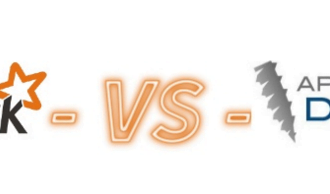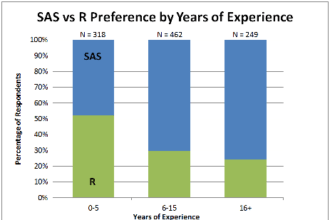At the FlowingData blog, data visualization commentator and Visualize This author Nathan Yau lists 5 misconceptions about visualization:
At the FlowingData blog, data visualization commentator and Visualize This author Nathan Yau lists 5 misconceptions about visualization:
- Software does everything (Nathan notes “Personally, I use a lot of R and have a lot of fun in Illustrator”, but uses a lot of other tools as well.)
- Visualization is for making data flashy
- The more information in a single graphic, the better
- It has to be exact
- Visualization is too biased to be useful
I agree completely with Nathan’s comments on the last point above:
There’s a certain amount of subjectivity that goes into any visualization as you choose what data to show and how to show it. By focusing on one part of the data, you might inadvertently obscure another. However, if you’re careful, get to know the data that you’re dealing with, and stay true to what’s there, then it should be easier to overcome bias.
After all, statistics is somewhat subjective, too. You choose what you analyze, what methods to use, and pick what to point out in reports.
News organizations, for example, have to do this all the time. They get a dataset, decide what story they want to tell (or find what story the data has to tell). Browse through graphics by The New York Times, and you can see how you can add a layer of information that objectively describes what the data is about.
This stands in contrast to the presentation I saw today at the Strata conference from Alex Lundry, Chart Wars: The Political Power of Data Visualization. (You can see a shorter version of his talk online). It was an entertaining talk, but his main point was to encourage data visualization partitioners to actively insert a point of view into the presentation of data. For example, he encourages more charts like the one on the right below, rather than the one on the left.
(Images from Nigel Holmes’ paper, Useful Junk? The Effects of Visual Embellishment on Comprehension and Memorability of Charts.)
Lundry’s take is that because the image on the right is more easily recalled by those who have seen it, it’s naturally better. I disagree. My objection to the chart on the right isn’t just that uses chartjunk, nor that the teeth are disporoportionately sized to the values, nor even that the X “axis” is slanted upwards to exaggerate the rise. My objection is the chart on the right is that it actively pushes an analysis upon the viewer. As Nathan notes, there’s always an element of bias in what data is selected to be presented, and the way it’s presented. But good charts merely present data, and leave the analysis (obvious though it may be) to the viewer. When a chart takes on the burden of analysis for the viewer, that’s when it strays from data visualization into propaganda.
FlowingData: 5 misconceptions about visualization







